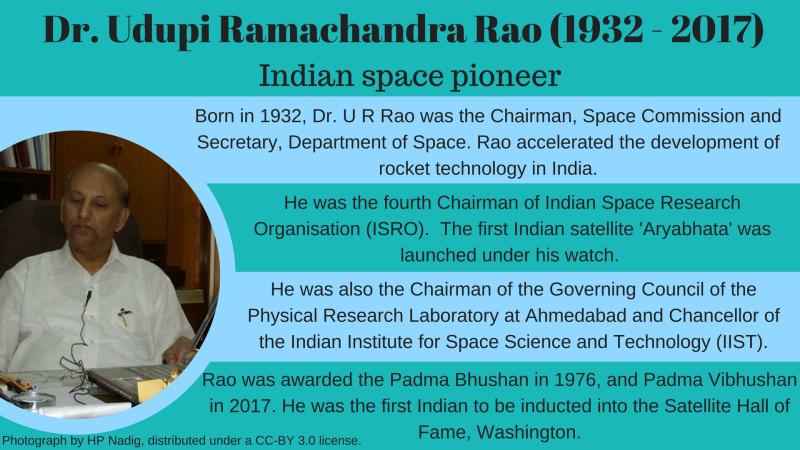
Dr. U R Rao was born on 10th March 1932, at Adamaru in the state of Karnataka. After completing his undergraduate at Anantpur, Rao moved to Banaras HIndu University for his Masters and then to Physical Research Laboratory, Ahmedabad to complete his PhD under the guidance of Dr. Vikram Sarabhai.
Rao’s area of specialisation included cosmic rays. After moving to MIT as a postdoctoral researcher, he was the first to establish the continuous nature of the solar wind and its effect on geomagnetism. During his period in the USA, he extensively experimented with a number of Pioneer and Explorer spacecrafts and understood the solar cosmic ray phenomena and the electromagnetic state of the interplanetary space, better. Realising the need for developing a competent space mission for his own country, Rao moved back to India and undertook the responsibility for the establishment of satellite technology in India.
Starting from India’s first satellite Aryabhata, Rao has been instrumental in the launch of over 18 satellites designed for remote sensing, communication and meteorological services. In 1985, he was appointed at the Chairman, Space Commission and Secretary, Department of Space. His interests now moved towards improving India’s rocket technology and under his watchful eyes, India launched the first ASLV rocket. PSLV and GSLV--series of rockets responsible for launching polar and geostationary satellites. He is credited for the successful launch of INSAT, which revolutionized the telecommunication sector in India. Recognising his contributions to the country’s space programs, he was awarded the Padma Bhushan in 1976.
In addition to his career stints at ISRO, Rao was the Co-Chairman of the National Centre for Antarctic and Ocean Research, Goa and was the first Chairman of Prasar Bharati. He has published over 300 scientific and technical papers in various national and international journals covering cosmic rays, interplanetary physics, high energy astrophysics, space applications and satellite and rocket technology.
Dr. Rao left for the heavenly abode on 24th July 2017, leaving behind a legacy very few can repeat.






